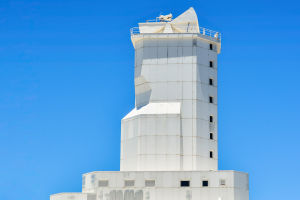The process of transforming from traditional agriculture to modern agriculture involves replacing traditional factors with industrial factors in agriculture.
This process is characterized by the replacement of animal power and manual work with mechanical work.
The replacement of chemical fertilizer with organic fertilizer input factors, the replacement of agriculture relying on experience with agriculture relying on scientific knowledge and experiments, and the replacement of subsistence agriculture based on self-production and self-sale of products with specialized commercial agriculture.
In developed countries, there are three main agricultural models. The agricultural mechanization model, represented by the United States, Canada, Australia, and other countries, aims to improve labour productivity.
The biotechnological model, represented by Japan, the Netherlands, and other countries, aims to improve the land output rate. The agricultural mechanization and biotechnological model, represented by France, Germany, and other countries, combines both approaches.
Regardless of which agricultural model is adopted, all countries have entered into comprehensive agricultural modernization with mechanization, seeding, chemicalization, electrification, and informatization as the main elements.
Global public agricultural investment in research and development has been increasing, with high-income countries consistently dominating global public agricultural investment. They maintain more than 50% of the global share.
In terms of the average annual growth rate of public agricultural investment, the rate in developing countries has been basically the same as that in developed countries and higher than the global average.
The new round of scientific and technological revolution and industrial change has injected development vitality for agricultural transformation and upgrading. Agriculture is gradually stepping into a stage of modern agricultural development led by information technology, bioengineering, intelligent production, and sustainability.
The agricultural technology revolution has brought comprehensive and profound changes to world agriculture and completely changed the production and trade pattern of world agriculture.
Countries support the weak links by promoting agricultural machinery research and development, upgrading the agricultural equipment industry, and accelerating the promotion of agricultural mechanization.
Farmers will have more and better agricultural machines to choose from in the future.
In Japan, the focus of multi-functional agriculture development is on facility agriculture, processing agriculture, tourism and leisure agriculture, and diversified agriculture.
These are comprehensive functions of creative agriculture, focusing on the development of agricultural green, environmental protection, experience, leisure, and demonstration functions, as well as the construction of high-tech industries and mosaic multi-functional "green island agriculture" as the two main features.
Japan's creative agriculture is mainly concentrated in three major metropolitan areas, namely Tokyo, Osaka, and Chukyo.
The main focus is on vegetable, fruit, multi-crop, and multi-species production, providing high-quality agricultural products for the public and meeting the needs of a green environment.
The beginning of agricultural modernization in the United States was dominated by mechanical technology.
Similarly, countries such as Canada, and Australia have started their agricultural modernization model with the promotion and application of mechanical technology in a wide area with a sparse population.
As agricultural modernization progresses, the focus shifts to more sustainable practices. One of the main challenges is to reduce the negative impact of agriculture on the environment.
Therefore, countries are promoting sustainable agricultural practices such as integrated pest management, precision farming, conservation tillage, and sustainable irrigation.


